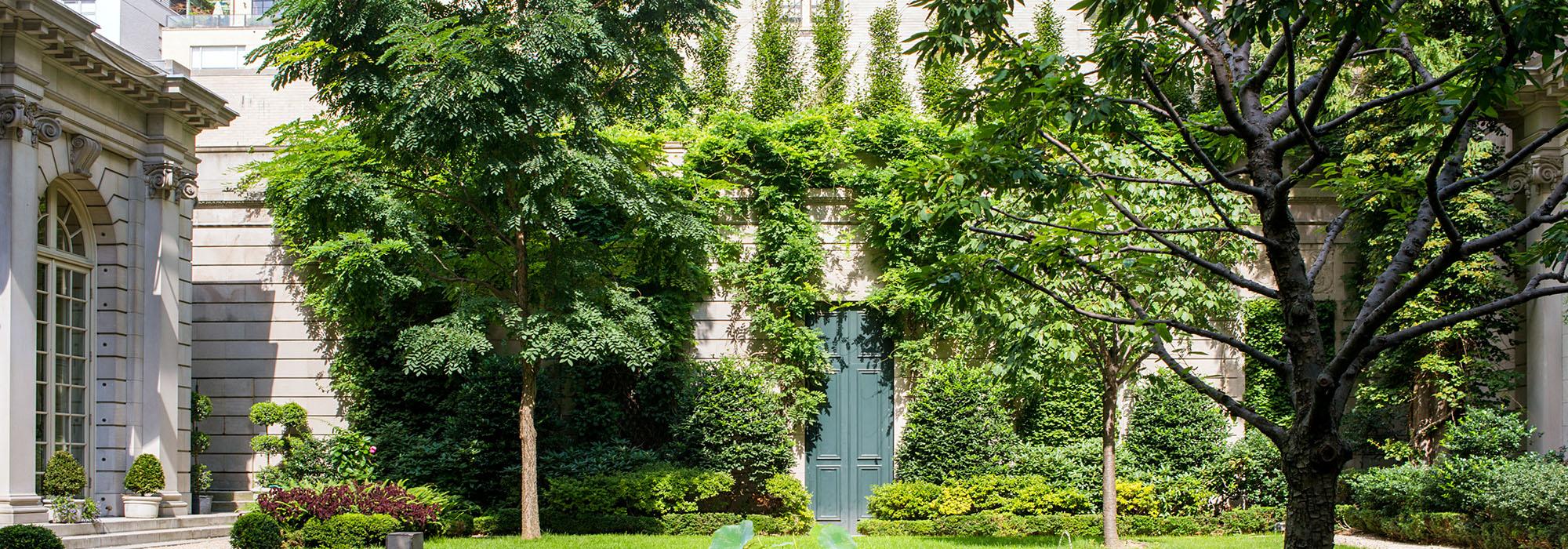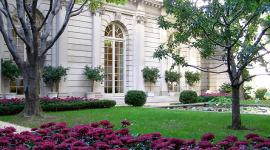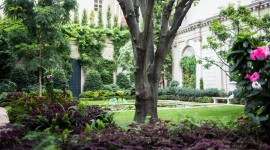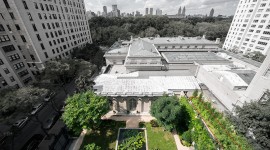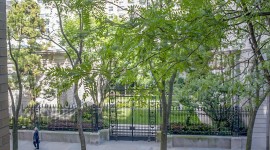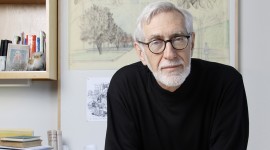Latest Frick Plan Makes Progress but Still Falls Short
EDITOR’S NOTE: Newly revised plans for the expansion of the Frick Collection’s facilities in Manhattan were revealed just prior to a meeting before the New York City Landmarks Preservation Commission (LPC) on June 26, 2018. The Cultural Landscape Foundation submitted the following letter to the LPC as written testimony on June 25, 2018.
June 25, 2018
Frederick Bland, Vice Chair
New York City Landmarks Preservation Commission
One Centre Street, 9th Floor
New York, NY 10007
Re: 1 East 70th Street and 10 East 71st Street; The Frick Collection
Dear Vice Chair Bland,
Having reviewed the most recently revised proposal (dated June 26, 2018) for the expansion of the Frick’s facilities, we are grateful that an effort is being made to address the physical environment for the plant materials in the signature trompe l’oeil ensemble along the north wall of the Russell Page-designed garden on East 70th Street.
The present plan is a good next step in the design-evolution process, and the architects should be commended for this progress; however, we believe that the final design approved by the Landmarks Preservation Commission (LPC) should embrace the full extent of Page’s original design intent. The present plan before the commission is headed in the right direction, but a twelve-inch change in the dimensions of Page’s signature design element on the north wall does not accomplish the task.
The Frick Collection’s website states: “Museum curatorial and conservation staff conduct research on the collections, their context and provenance. Conservation staff are continually researching the construction and history of objects in The Frick Collection as well as past and possible future treatments. They disseminate the results in talks, conference papers, and publications.” The question is: will the museum give the Page garden—in its entirety—the same curatorial care and consideration it gives to other masterpieces in its collection? For example, has an experienced landscape historian been engaged to create the framework for the new design of the garden’s north wall ensemble in the way that architectural historians have established a framework for the built architecture?
In a letter sent to the LPC on June 24, 2018, the eminent cultural landscape historian and author Mac Griswold compared the Page-designed garden to the paintings in the museum’s Fragonard room. Ms. Griswold calls attention to the “rococo vegetation” in the paintings’ backgrounds and concludes: "the feeling these ‘backgrounds’ deliver actually matters [and] carries import." Apropos of that analogy, the Frick, according to talking points provided to us, claims that the Page garden “must be as carefully restored as a Rembrandt or a Velasquez.” The museum also says that “Russell [Page] was able through clever illusion to give the garden a spacious feeling,” and “The Frick will re-create the same illusion, following as closely as possible in his footsteps.” And yet, in the course of restoring a Velasquez or a Rembrandt, would the Frick ever consider cutting down the painting to fit within a smaller frame, no matter how well designed that frame? That is the very choice the Frick’s leadership insists must be made for the garden in the proposed expansion—allowing a new frame to redefine the parameters of an existing masterpiece.
The Frick Collection is more than the contents within its walls. Indeed, the Frick’s leadership has historically acknowledged the significance of the museum’s architectural setting as an honored part of its material holdings. It would appear, however, that the current effort still stops short when it comes to the great work of landscape architecture in the museum’s care—a rare, surviving masterpiece by internationally celebrated landscape architect Russell Page (and his only landscape in New York City), which is potentially eligible for listing as a National Historic Landmark.
In previous testimony submitted on June 18, 2018, we respectfully suggested that the LPC require the Frick Collection to afford the Page garden, in its totality, greater scrutiny. We once again urge the LPC to request further refinements to the proposed treatment of the Page-designed garden, especially as it affects the essential visual and spatial characteristics associated with the north wall’s signature and defining trompe l’oeil device. The museum has already proved itself a capable steward of many great works of art; it need only apply the same rigorous standards to the Page garden.
Sincerely,

Charles A. Birnbaum, FASLA, FAAR, Founder, President, and CEO
The Cultural Landscape Foundation



